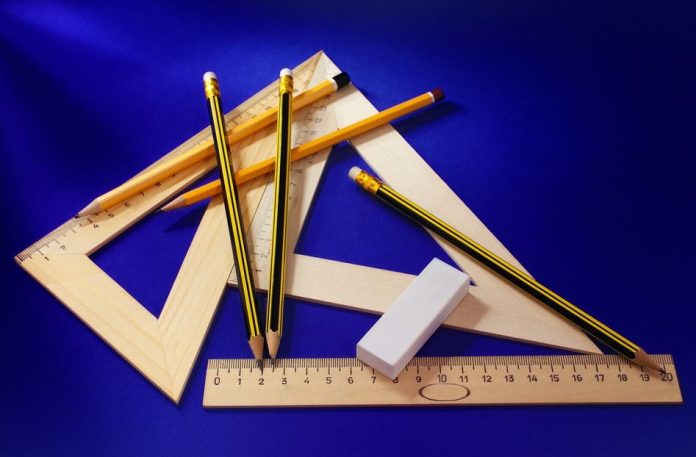Table of Contents
Math is a vital tool for global knowledge and communication that organizes and prevents disorder in our life. Mathematics helps in our understanding of the world and is a good tool for developing mental discipline. Math encourages logical reasoning, critical & creative thinking, abstract & spatial thinking, problem-solving abilities, and communication skills.
Why Is Math So Important?
 Science, technology, and engineering are critical to our country’s future development and cannot thrive unless practitioners have a solid mathematical basis. The value of a thorough mathematical education extends much beyond the current discussion about increased test-score performance.
Science, technology, and engineering are critical to our country’s future development and cannot thrive unless practitioners have a solid mathematical basis. The value of a thorough mathematical education extends much beyond the current discussion about increased test-score performance.
Posing hypotheses, devising tests and controls, analyzing data, finding patterns, seeking evidence, conclusions, and proof, solving problems, and seeking absolutes are abilities that a solid foundation in mathematics and science develops and hones while remaining open to new information.
Branches of mathematics
The 5 branches of mathematics are Algebra, Number Theory, Arithmetic, and Geometry. In addition, Probability and Statistics, Topology, Matrix Algebra, Game Theory, and Operations Research are a few newer disciplines.
A cubic function is a type of polynomial function that is one of the most difficult polynomial equations. While solving a cubic equation is not as simple as solving a quadratic problem, there are a few techniques you may apply to discover the solution without turning to pages and pages of complex algebra.
How Does a Cubic Function Work?
 The cubic function is a polynomial of third degree. The following is an example of a general polynomial function:
The cubic function is a polynomial of third degree. The following is an example of a general polynomial function:
f(x) = ax^n +bx^{n-1} + cx^{n-2} …
vx^3+wx^2+zx+kf(x)=axn+bxn−1+cxn−2…vx3+wx2+zx+k
The variable is x, n is any number (and the polynomial’s degree), k is a constant, and the other letters are constant coefficients for each power of x. As a result, a cubic function with n = 3 is:
f(x)=ax3+bx2+cx1+d
Where is d the constant in this case? Then, when you have to answer a cubic equation, it will be given to you in the following format:
ax^3 +bx^2 + cx^1+d = 0ax3+bx2+cx1+d=0
Each x answer is referred to as a “root” of the problem. Cubic equations can have one or three real roots, and they can be repeated, but there is always one solution.
Methods of Solving Cubic Equations
Anyone studying science or mathematics needs to be able to solve higher degree polynomial equations. Understanding how to solve these types of problems, on the other hand, is difficult.
A cubic equation is a third-degree algebraic equation.
A cubic function has the following general form: f (x) = ax3 + bx2 + cx1 + d. And the cubic equation is ax3 + bx2 + cx + d = 0, where the coefficients are a, b, and c, and the constant is d.
Cubic Equations: How to Solve Them?
 A cubic problem is solved after reducing it to a quadratic equation and using factoring or the quadratic formula.
A cubic problem is solved after reducing it to a quadratic equation and using factoring or the quadratic formula.
A cubic equation may have three real roots, like how a quadratic equation has two. But, on the other hand, a cubic equation has at least one actual root, unlike a quadratic equation, which may have no genuine solution.
The other two roots may or may not be real.
If you’re given something like 3×2 + x – 3 = 2/x, for example, you’ll re-arrange it into standard form and write it as 3×3 + x2 – 3x – 2 = 0. Then you can solve it using any approach you like.
For a better understanding, consider the following examples:
Example 1
The roots of the cubic equation 2×3 + 3×2 – 11x – 6 = 0 are to be found.
Solution
Since d = 6, the factors that can be used are 1, 2, 3, and 6.
By trial and error, check the possible values using the Factor Theorem.
f (1) = 2 + 3 – 11 – 6 ≠ 0
f (–1) = –2 + 3 + 11 – 6 ≠ 0
f (2) = 16 + 12 – 22 – 6 = 0
Here, the first root is x = 2.
Using the synthetic division approach, we can get the other roots of the equation.
= (x – 2) (ax2 + bx + c)
= (x – 2) (2×2 + bx + 3)
= (x – 2) (2×2 + 7x + 3)
= (x – 2) (2x + 1) (x +3)
As a result, the answers are x = 2, x = -1/2, and x = -3.
Explanation and Examples for Graphing Cubic Functions
A two-dimensional model of functions where x is raised to the third power is obtained by graphing cubic functions.
In some respects, charting cubic functions is like quadratic graphing functions. The basic shape of a cubic graph can be used to create models for more intricate cubic functions.
Graphing a Cubic Function
Before graphing a cubic function, we must first learn how to graph the parent function, y=x3.
Graph 1: Cubic function representation
The Parent Function’s Most Important Points
The parent function, x3, traverses the origin. Thus, it has the appearance of two half of parabolas that point in opposite directions pasted together.
Vertex
The point where the cubic function changes directions are called the vertex. This location is the origin of the parent function.
We can add or remove numbers to the cubed section of the function to shift this vertex to the left or right. The function (x-1)3 is, for example, the cubic function displaced one unit to the right. The vertex in this situation is at (1, 0).
We can add or subtract numbers after the cubed section of the function to shift it up or down. The function x3+1, for example, is the cubic function shifted one unit higher. The vertex of it is (0, 1).
Reflection
We can adjust the graph’s stretch by multiplying the cubed function by a number like we did before. For instance, 0.5×3 spreads the function, whereas 2×3 compresses it.
If the value of this integer, a, is negative, the graph is turned upside down, as shown.
Graph 2: Negative cubic function representation
The y-Intercept
The y-intercept, like the x-intercept of quadratic and linear functions, is the point when x=0. Thus, to locate it, locate the point f. (0).
The y-intercept, the vertex, and the parent function are all the same. The y-intercept of the function (x-1)3 is (0-1)3=-(-1)3=-1.
The x-intercept
Cubic functions, unlike quadratic functions, always have at least one genuine solution. They have the option of having up to three. The function x(x-1)(x+1) simplifies to x3-x, for example. However, we can see from the original shape of the function that this function will be equal to 0 when x=0, x=1, or x=-1.
Finally,
It takes practice to use the algebraic approach to solve equations. So, to improve your math skills, I hope you will spend some time working out some equations utilizing these strategies. Always use the factorization calculator to double-check your cubic equation.

